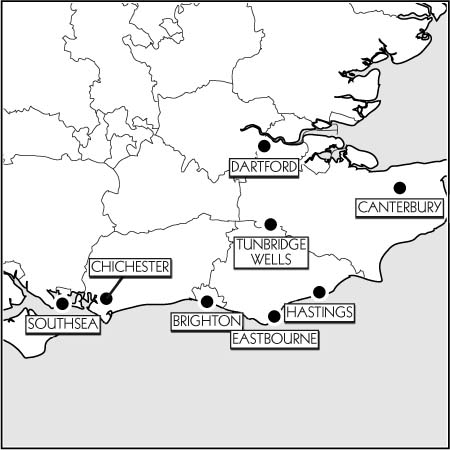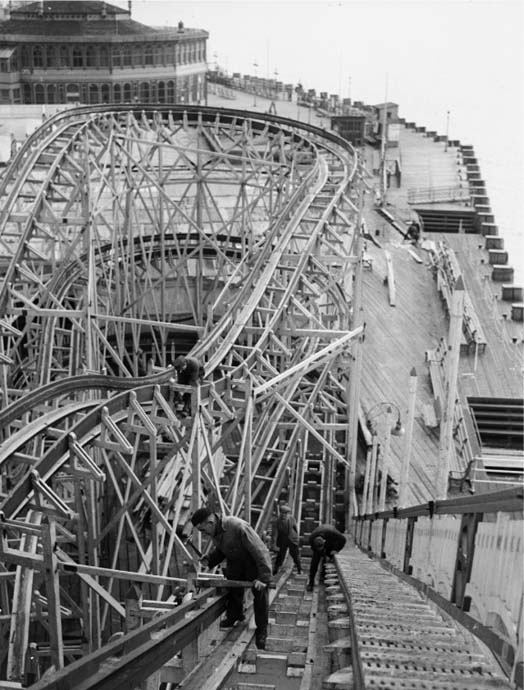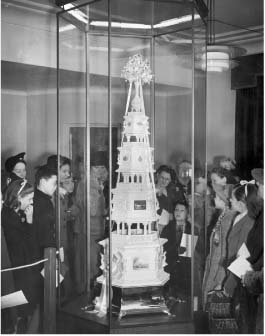Lyttelton's Britain (6 page)
Read Lyttelton's Britain Online
Authors: Iain Pattinson
Islington began to show evidence of social divide after parts of the borough became fashionable under New Labour

H
ACKNEY
is an ancient community steeped in history. The name ‘Hackney’ actually derives from a 14th Century French word meaning a workhorse, hence the expression ‘Hackney Carriage’. Interestingly the words ‘Hackney Carriage’ have no connection with Hackney the London borough, which explains why it is impossible ever to find a taxi there.
Hackney is undoubtedly best known for the Hackney Empire. Lasting from about 750
AD
well into the 12th Century, it covered much of Northern Europe to the Urals, and was the constant rival to the expansionist Visigoths, who feared the frequent raids into their territory made by fierce marauding warriors clad in sequined suits and large floppy hats, who terrified the indigenous population with plates of jellied eels. Though today the only reminder of the great Hackney Empire is a Grade II listed Victorian theatre on Mare Street, the habit of frightening foreigners with jellied eels and funny hats still remains.
Down the years, the Hackney Empire theatre has seen performances from music hall greats such as Charlie Chaplin, W. C. Fields, Marie Lloyd and Mary Pickford. After one memorable evening when all four appeared on the bill together, Chaplin and W.C. Fields decided to form a business partnership
and United Artists was born. Miffed at having been left out, Marie Lloyd started a high street bank to provide finance for Mary Pickford to launch her world famous removals firm.
 LYTTELTON’S BRITAIN
LYTTELTON’S BRITAIN  ENGLAND
ENGLANDTHE SOUTH-EAST


Network South East put the final touches to the Kent section of the Eurostar rail link

T
HE HISTORIC TOWN
of Dartford has much to fascinate the curious visitor. Dartford has been occupied by man since the dawn of civilisation, and at various times animal species as diverse as cave lions, rhinos, tree monkeys and bison roamed the area, until someone thought to fit a new padlock on the zoo gates.
In prehistoric times, the area was the habitat of a vast number of lemmings. As the Ice Age receded, cave paintings record their migration north across the still frozen River Thames to Essex, where, after a short stay, they took up the habit of throwing themselves off cliffs.
Dartford town really only became established with the arrival of the Romans, who record the village of ‘Tarrentford’ as home of the Tarrent people – a blond-haired tribe of over-rated irritating gits.
Dartford was but a small village until the Middle Ages, when the town enjoyed rapid growth thanks to the many pilgrims passing through on their way to Canterbury. They would assemble in London under the Charing Cross and pray for a safe day’s journey. The tradition of praying at Charing Cross to get to Dartford on the same day survives even now.
The nearby housing estate at Thamesmead was used for location shots in the Stanley Kubrick movie
A Clockwork Orange
.
With its distopian scenes of gratuitous sex and violence and with an invented infantile language, it was a difficult place to film, but Kubrick persevered.
The Peasants Revolt of 1381 started in Dartford, when a poll tax collector’s brains were beaten out with a hammer by Wat Tyler, to promote his new roofing trade magazine.
Under the reign of Henry VIII, when the Church of England split from Rome, the pilgrim trade went into decline, and Dartford faced economic collapse. However, to encourage a revival, Henry built a small palace in Dartford, which he used as a retreat while attempting to overcome his addiction to wedding cake.
In 1660, Dartford was struck by the plague. When the epidemic ended, the town’s mayor decreed that the mighty bells of Holy Trinity Church be rung constantly for a week. The same week in fact that the tinnitus epidemic started.
During the Industrial Age, Dartford took to making fine wax candles and became the largest producer in Europe. However, with the coming of town gas, demand for candles collapsed and traders found they had wax coming out of their ears.

A worker at the Frank Dobson Candle Factory, Dartford
Fine metalworking soon took over as a principal industry, and until very recently parts were supplied to the luxury car
market. At a specialist metal fabrications factory it took one man nearly a year to hand-finish a single radiator grill. So they sacked him.
During World War II, Dartford was the most heavily bombed town in England with large areas being flattened. But when peace resumed, negotiations with the Germans agreed compensation was to be paid for the excellent job they’d done.
The next event of historical interest occurred in 1956, when Dartford’s famous tunnel was completed. It was opened by Her Majesty the Queen, to the applause of motorists queuing to be the first through. When she returned to open the new Dartford Bridge some 40 years later, Her Majesty was surprised to recognise the same ones again. Sadly, the opening of the magnificent bridge, which soars high above the Thames, had to be postponed because of the terrible wind that afternoon, so fierce it threatened high-sided vehicles. Her Majesty apologised to the crowd, putting it down to the tin of beans she had for lunch.
Probably the most famous name associated with Dartford is Mick Jagger. His contribution to Dartford is recognised in the town’s music and arts venue, ‘The Mick Jagger Centre’, where elderly men with bad haircuts can take their pick from a selection of 19-year-old bikini-clad Brazilian models.

The unveilling of a 1:100 scale model of the proposed Elizabeth Taylor memorial at Dartford
